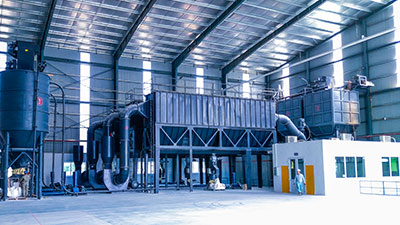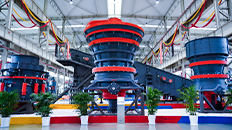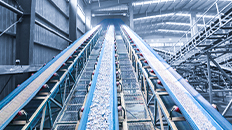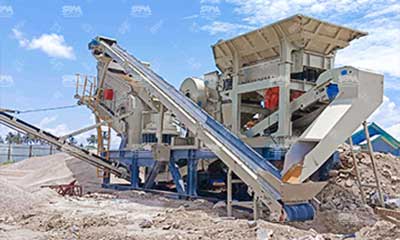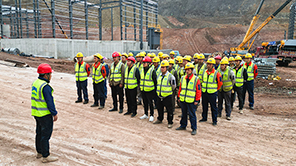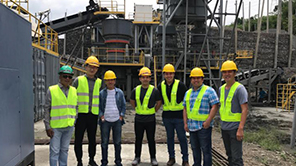Summary:The crushing of sandstone is a vital process in the aggregate industry, enabling the production of high-quality materials for construction and other applications.
Introduction to Sandstone
Sandstone is a sedimentary rock primarily composed of sand-sized particles, with more than 50% of its composition made up of these grains. Due to its unique properties, sandstone is widely utilized in various applications within the aggregate industry, including construction, landscaping, and as a raw material for various products. This article will explore the crushing process of sandstone and the equipment used in its production.

Sandstone Crushing Process
The crushing process for sandstone involves several key stages, each designed to break down the material efficiently and produce high-quality aggregates. The typical flow of the sandstone crushing process is as follows:
- 1. Raw Material Feed Bin: The process begins with a feed bin that stores the sandstone and regulates the flow of material into the system.
- 2. Feeding Equipment: A feeder, often a vibrating feeder, transfers the sandstone from the raw material bin to the crusher. This equipment ensures a consistent and controlled feed rate.
- 3. Jaw Crusher: The first stage of crushing usually involves a jaw crusher, which is responsible for primary size reduction. This crusher compresses the sandstone between a fixed jaw and a movable jaw, breaking it down into smaller pieces.
- 4. Impact Crusher or Cone Crusher: After the jaw crusher, the material may be fed into an impact crusher or a cone crusher for secondary crushing. These crushers provide further size reduction and improve the shape and gradation of the final product.
- 5. Vibrating Screen: Following the crushing stages, a vibrating screen separates the crushed material into different sizes, ensuring that only the desired particle sizes are produced for specific applications.
- 6. Final Products: The output of the crushing process can be directly used as finished aggregates or stockpiled for further processing.
Benefits of the Sandstone Crushing Process
The sandstone crushing process offers several advantages:
- High Automation: The process is highly automated, reducing the need for manual intervention and minimizing labor costs.
- Low Operating Costs: Efficient design and operation lead to lower energy consumption and reduced operational expenses.
- High Crushing Rate: The equipment is designed for optimal crushing performance, providing a high reduction ratio.
- Energy Efficiency: Modern crushing technologies focus on energy-saving methods, making the operation more sustainable.
- Large Production Capacity: The setup can handle significant volumes of material, ensuring a steady supply of aggregates.
- Minimal Pollution: Advanced dust control systems and efficient equipment design minimize environmental impact.
- Easy Maintenance: Equipment is designed for ease of maintenance, reducing downtime and ensuring continuous operation.
- Quality of Final Products: The crushed sandstone meets national construction standards, with uniform particle sizes, good shape, and appropriate gradation.
Stone Crusher for Sandstone Crushing
1. Jaw Crusher
The jaw crusher is one of the most commonly used crushers in the initial stage of sandstone processing. Its design allows for the efficient breaking of large rocks into manageable sizes. The jaw crusher's robust construction and ability to handle hard materials make it ideal for primary crushing applications.
2. Impact Crusher
Impact crushers are utilized for secondary crushing. They work by using high-speed impact forces to break down the sandstone into finer particles. This type of crusher is especially effective for producing high-quality aggregates, as it provides excellent shape and gradation.
3. Cone Crusher
Cone crushers are another option for secondary and tertiary crushing. They are designed to produce finely crushed material with a consistent particle size. The cone crusher's ability to adjust the size of the output makes it a versatile choice for sandstone processing.
Configuration of 350 TPH Sandstone Crushing Line
For a production capacity of 350 tons per hour, the configuration of the sandstone crushing line is critical to ensure optimal performance. Below are the specifications and components of a typical setup:
- Raw Material: Sandstone
- Feed Size: Up to 750 mm
- Final Product Size: 0-30 mm
- Production Capacity: 350 t/h
-
Equipment Configuration:
1. PE900×1200 Jaw Crusher: This primary crusher is capable of handling large feed sizes and is essential for the initial size reduction of sandstone.
2. HPT500 Multi-Cylinder Cone Crusher: This advanced cone crusher is used for secondary crushing. Its multi-cylinder design allows for increased efficiency and reduced energy consumption, while producing high-quality aggregates.
The crushing of sandstone is a vital process in the aggregate industry, enabling the production of high-quality materials for construction and other applications. Understanding the crushing process and the equipment involved is essential for optimizing production efficiency and ensuring product quality. With the right configuration and technology, sandstone can be effectively processed to meet the demands of various industries while adhering to environmental standards. By leveraging modern crushing techniques, businesses can enhance their operational capabilities and contribute to sustainable development in the mining and construction sectors.



